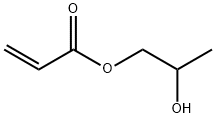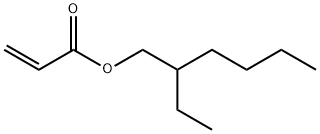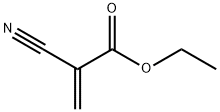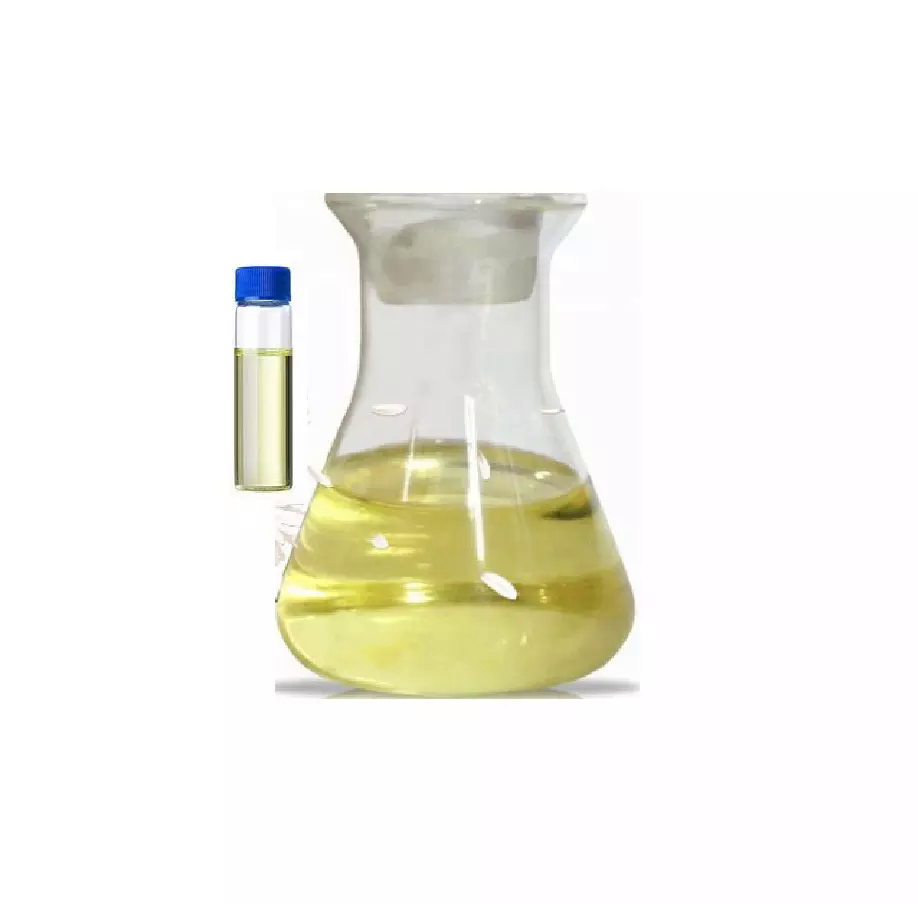2-Hydroxyethyl acrylate
Synonym(s):Ethylene glycol monoacrylate
- CAS NO.:818-61-1
- Empirical Formula: C5H8O3
- Molecular Weight: 116.12
- MDL number: MFCD00002865
- EINECS: 212-454-9
- SAFETY DATA SHEET (SDS)
- Update Date: 2025-12-17 09:50:07

What is 2-Hydroxyethyl acrylate?
Description
2-Hydroxyethyl acrylate (HEA) forms homopolymers and copolymers. HEA is used mainly either as a co-monomer in the manufacture of polymers or as a chemical reactant in the manufacture of chemical intermediates. In the manufacture of polymers, HEA can be co-polymerized with acrylic acid, acrylates, methacrylates, vinyl acetate, vinyl chloride, vinylidene chloride, styrene, butadiene, and the like. Co-reactants with HEA include aromatic and aliphatic isocyanates, anhydrides, and epoxides. The polymers and chemical intermediates made with HEA find applications in automotive top coatings, architectural coatings, photocure resins, and adhesives. Globally about half of the HEA produced is used in the production of acrylic enamels for the automotive industry, where a clear topcoat is applied to a pigmented base coat to increase corrosion protection and durability.
Chemical properties
Hydroxyethyl acrylate is a clear colorless liquid. miscible with water, soluble in general organic solvents. The commodity generally contains 400ppm of hydroquinone methylether, a polymerization inhibitor. Hydroxyethyl acrylate is a difunctional acrylate monomer with the characteristic high reactivity. Hydroxyethyl acrylate is used in a crylics for coatings, adhesives and UV reacitve oligomers. It can be used for crosslinking with isocyantes or melamines.
The Uses of 2-Hydroxyethyl acrylate
2-Hydroxyethyl acrylate is an acrylic monomer for use in UV inks, adhesives, lacquers, artificial nails, etc.
The Uses of 2-Hydroxyethyl acrylate
As a reactive monomer 2-Hydroxyethyl acrylate is used as a crosslinking agent for resins, plastics and rubber modifiers. Further, it is used in the synthesis of amphilic block copolymers by nitroxide mediated living radical polymerization. In addition to this, it is used to prepare tuned poly(hydroxyethyl acrylate) by atom transfer radical polymerization.
What are the applications of Application
2-Hydroxyethyl acrylate is a hydroxyl group containing vinyl monomer
Definition
ChEBI: 2-Hydroxyethyl acrylate is a functional monomer for the manufacture of thermosetting acrylic resins.
General Description
A clear colorless liquid. Less dense than water. Vapors heavier than air. Corrosive to tissue. Flash point 120°F. May polymerize exothermically if heated or contaminated. If the polymerization takes place inside a container, the container may rupture violently. Used to make plastics.
Air & Water Reactions
Flammable. Slightly soluble in water.
Reactivity Profile
A functional monomer of thermosetting acrylic resins.
Health Hazard
Inhalation causes irritation of nose and throat. Contact with liquid irritates eyes and skin.
Fire Hazard
Behavior in Fire: Containers may explode
Flammability and Explosibility
Non flammable
Potential Exposure
2-Hydroxyethyl acrylate is contained in Lowicryl 4KM and K11M resins. It caused contact dermatitis in workers embedding media for electron microscopy. It may also be contained in ultraviolet-curable nail gel used for photobonded sculptured nails.
Properties of 2-Hydroxyethyl acrylate
| Melting point: | -60 °C |
| Boiling point: | 90-92 °C12 mm Hg(lit.) |
| Density | 1.106 g/mL at 20 °C |
| vapor density | >1 (vs air) |
| vapor pressure | <0.1 mm Hg ( 20 °C) |
| refractive index | n |
| Flash point: | 209 °F |
| storage temp. | 2-8°C |
| form | Oily Liquid |
| pka | 13.85±0.10(Predicted) |
| color | Yellow to brown |
| Water Solubility | soluble |
| Sensitive | Light Sensitive |
| BRN | 969853 |
| Exposure limits | ACGIH: TWA 5 mg/m3 NIOSH: TWA 5 mg/m3 |
| CAS DataBase Reference | 818-61-1(CAS DataBase Reference) |
| NIST Chemistry Reference | 2-Propenoic acid, 2-hydroxyethyl ester(818-61-1) |
| EPA Substance Registry System | 2-Hydroxyethyl acrylate (818-61-1) |
Safety information for 2-Hydroxyethyl acrylate
| Signal word | Danger |
| Pictogram(s) |
 Corrosion Corrosives GHS05  Skull and Crossbones Acute Toxicity GHS06  Environment GHS09 |
| GHS Hazard Statements |
H302:Acute toxicity,oral H311:Acute toxicity,dermal H314:Skin corrosion/irritation H317:Sensitisation, Skin H410:Hazardous to the aquatic environment, long-term hazard |
| Precautionary Statement Codes |
P261:Avoid breathing dust/fume/gas/mist/vapours/spray. P273:Avoid release to the environment. P280:Wear protective gloves/protective clothing/eye protection/face protection. P301+P312:IF SWALLOWED: call a POISON CENTER or doctor/physician IF you feel unwell. P303+P361+P353:IF ON SKIN (or hair): Remove/Take off Immediately all contaminated clothing. Rinse SKIN with water/shower. P305+P351+P338:IF IN EYES: Rinse cautiously with water for several minutes. Remove contact lenses, if present and easy to do. Continuerinsing. |
Computed Descriptors for 2-Hydroxyethyl acrylate
| InChIKey | OMIGHNLMNHATMP-UHFFFAOYSA-N |
2-Hydroxyethyl acrylate manufacturer
Triveni Interchem Private Limited (Group Of Triveni Chemicals)
New Products
4,4-Difluoropiperidine hydrochloride tert-butyl 9-methoxy-3-azaspiro[5.5]undecane-3-carboxylate Indole Methyl Resin N-Isopropylurea N,N-Dicyclohexylcarbodiimide(DCC) MELDRUMS ACID 5-METHYLISOXAZOLE-4-CARBOXYLIC ACID Magnessium Bis glycinate Zinc ascorbate 1-bromo-2-butyne 2-acetamidophenol 9(10H)-anthracenone Erythrosin B, 4-Piperidinopiperidine 2-((4-morpholinophenylamino) (methylthio) methylene) malononitrile 2,4-dihydroxybenzaldehyde 3-(4-morpholinophenylamino)-5-amino-1H-pyrazole-4-carbonitrile Methyl 2-methylquinoline-6-carboxylate 2,6-dichloro-4-nitropyridine 4-Bromo-2-chlorobenzonitrile 2-(benzylamino)acetic acid hydrochloride 4-(tert-Butoxycarbonylamino)but- 2-ynoic acid 3,4-dihydro-2H-benzo[b][1,4]dioxepine 1-Phenyl-1-cycloprppanecarboxylicacidRelated products of tetrahydrofuran








You may like
-
 2 - HYDROXY ETHYL ACRYLATE (2HEA) 99%View Details
2 - HYDROXY ETHYL ACRYLATE (2HEA) 99%View Details -
 HYDROXY ETHYL ACRYLATE 99%View Details
HYDROXY ETHYL ACRYLATE 99%View Details -
 2-Hydroxyethyl Acrylate (stabilized with MEHQ) CAS 818-61-1View Details
2-Hydroxyethyl Acrylate (stabilized with MEHQ) CAS 818-61-1View Details
818-61-1 -
 2-Hydroxyethyl acrylate, 96%+ CAS 818-61-1View Details
2-Hydroxyethyl acrylate, 96%+ CAS 818-61-1View Details
818-61-1 -
 2-Hydroxyethyl Acrylate (HEA), LiquidView Details
2-Hydroxyethyl Acrylate (HEA), LiquidView Details
818-61-1 -
 2 Hydroxyethyl Acrylate, LiquidView Details
2 Hydroxyethyl Acrylate, LiquidView Details
818-61-1 -
 2-Hydroxyethyl Acrylate., SolidView Details
2-Hydroxyethyl Acrylate., SolidView Details
818-61-1 -
 2-Hydroxyethyl Acrylate, LiquidView Details
2-Hydroxyethyl Acrylate, LiquidView Details
818-61-1
